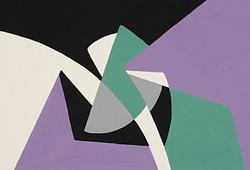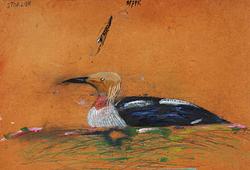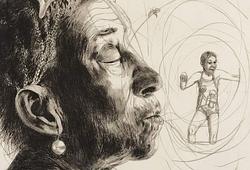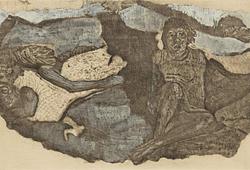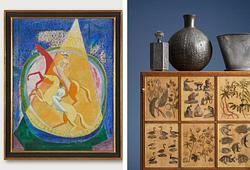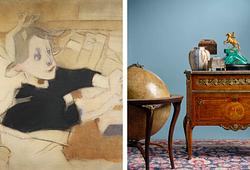Henri Matisse
Still Life with Sleeping Woman.
Signed H Matisse and dated 40. Pencil on paper, sheet size 41 x 52.5 cm. Bukowskis thanks Georges Matisse for the information about the work. A certificate will be included with this lot.
Alkuperä - Provenienssi
The Art Salon Samlaren, Stockholm.
Private Collection.
Näyttelyt
The Art Salon Samlaren, Stockholm, "Henri Matisse: Themes and Variations the Dream - the Chapel", 31 December 1951 - 31 January 1952.
Skåne Art Museum, Lund, "Henri Matisse: Themes and Variations the Dream - the Chapel", 1952.
Kirjallisuus
Exhibition catalogue, Art Salon Samlaren and Skåne Art Museum, "Henri Matisse", illustrated on the cover.
Muut tiedot
Henri Matisse, one of the most influential artists of the 20th century, saw drawing as a deeply intimate means of expression. For him, it was a way to capture emotion, movement and form in a way that was direct and instant. His drawings, often gestural and spontaneous, reflected his desire to capture the essence of his subject without getting stuck in details. Matisse favoured subjects such as the female figure or still life, as these allowed him to explore and experiment with form and emotion in a free and expressive way.
Drawings played an important role in his artistic process and were often preparatory studies for his paintings and sculptures. Matisse saw them as quicker, more intuitive practices that captured the feeling and form he wanted to work on in his larger works. For him, drawing was not just a technique, but a way of communicating his perception of the world in an immediate way, reflecting his desire to express the human figure and the surrounding space in a redemptive way.
Matisse considered these gestural exercises to be central to his creative process, as they allowed him to capture the vitality and movement he experienced in his motifs. His drawings became a way of bringing spontaneity and creativity into his paintings, and through these fast and dynamic lines he was able to express the emotions and movements that were at the very heart of his art.
The auction's drawing from 1940 is an excellent example of how Matisse used drawings as a study for his paintings. This drawing is a pre-study for his painting Still Life with Sleeping Woman from the same year. Here we see how, through his simple lines and gestural movements, he captures the calm and dreamy emotion that he would later transmit in his painting.




